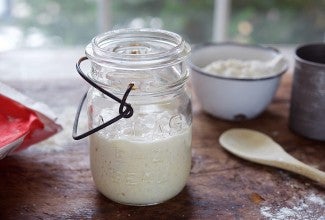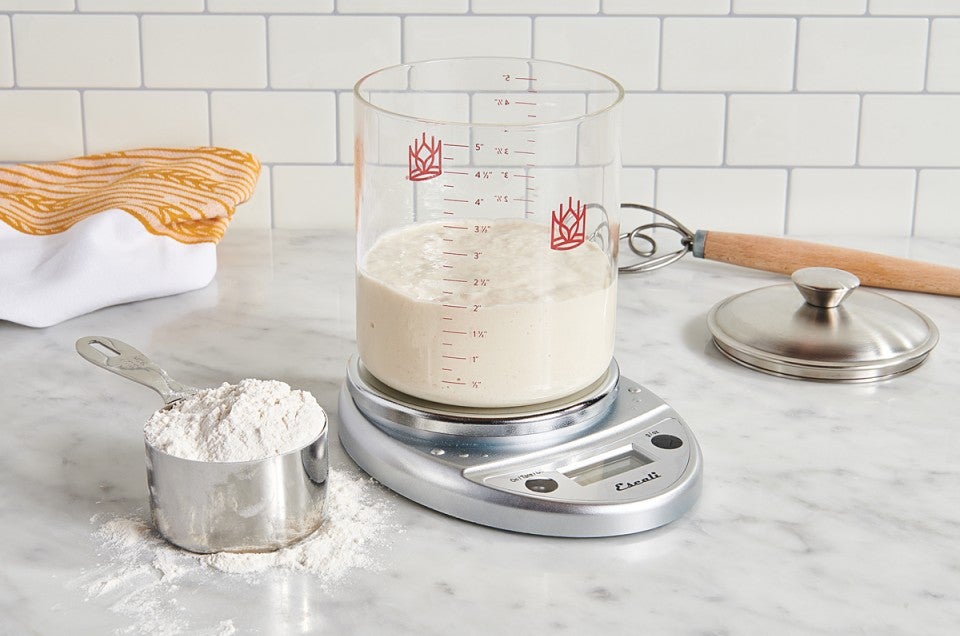


A sourdough starter is often likened to a pet, but unlike a puppy, if you forget to feed it when you’re supposed to, nothing bad will happen. Because even though starters are technically alive, they’re incredibly resilient. Really, a starter is more like a shape-shifting plant — it can be fed daily for maximum activity, the same way you’d water a finicky plant, but it can just as easily go months (months!) in the fridge without a meal, like a cactus in the desert.
If you forgot to feed your starter when you were supposed to (see below for ideal timing), it’s almost certainly going to be OK. Here’s what to do:
Generally, there are two routines you may choose for feeding your sourdough starter:
Twice daily at room temperature: If you’re a regular sourdough baker, the best way to have ripe starter when you need it is to keep your starter on the counter at room temperature and feed it twice daily, about every 12 hours.
Once a week in the fridge: If you are a more casual sourdough baker, it’s easiest to keep your starter in the fridge and feed it once a week. (We recommend leaving it on the counter for a few hours after feeding to start fermenting before returning it to the fridge.) Then, a day or two before you want to bake, give it a couple of feedings at room temperature before using it to bake.
The guidance below applies to both feeding schedules. Please note: If you typically keep your starter at room temperature and aren't going to be able to feed it for an extended period of time — maybe you have a hectic week coming up, or are leaving town for a few days — stick it in the fridge until you're able to return to it. It can last much longer in the fridge without a meal than it can on the counter. Once you get back on a regular schedule, bring it back to room temperature.
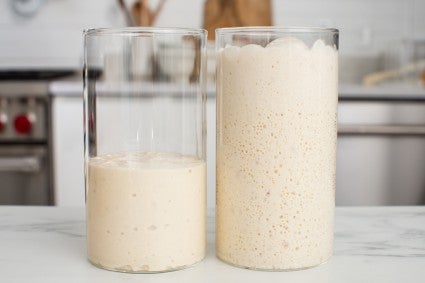
Don’t worry — your starter is fine. Just pick back up with your typical routine and your starter will settle in easily. To be safe, give it one or two feedings before you bake with it to make sure it’s at full strength.
Your starter is probably looking a little neglected and acting sluggish. However, it’s almost certainly not dead — it takes a lot to kill a mature sourdough starter! If you store your starter in the fridge, feed your starter once and leave it at room temperature, then monitor its progress over the next 12 hours. (A straight-sided clear container like our Glass Sourdough Crock is perfect for this.) As long as it increases in size over this period of time, it’s still alive. And to get it back up to a healthy and vigorous state, keep feeding it until it doubles in size within 6 to 8 hours. This may take another several feedings and up to a few days.
(Temperature can also affect how quickly starter moves; it will be slower in colder environments and quicker in warmer ones. If you struggle with either of these, a temperature-controlled sourdough home can help regulate your starter’s environment.)
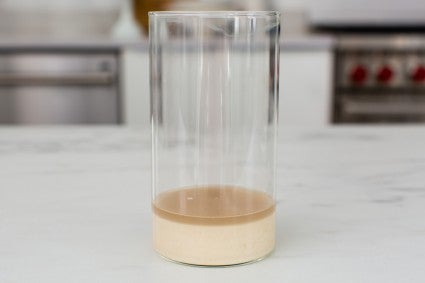
That’s still OK! Black liquid on top of your starter looks scary, but in reality, it’s nothing to be concerned about. This thin liquid (called “hooch”) is merely alcohol and water generated by your starter’s wild yeast as it feeds. You can either stir it back into the starter and feed as normal or drain it off and then feed it — the choice is up to you.
Note: Though rare, if your starter has pink or orange streaks, that can be a sign of spoilage. It’s best to throw it out and start again.
As before, resume feedings and keep an eye on your starter’s activity. It may not show any sign of life after the first feeding, or even the first several feedings, but eventually, it should start to bubble and rise. (If it doesn’t, it really is dead — time to start another one or purchase our fresh sourdough starter.) And remember, your starter isn’t back to fully healthy (and ready to bake) until it doubles in size within 6 to 8 hours, so keep feeding until it’s at this level of activity.
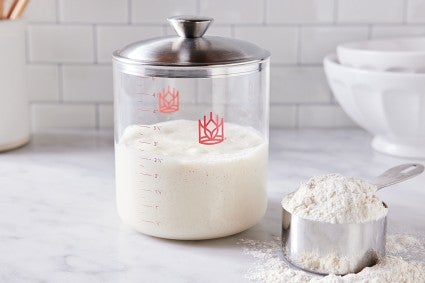
If your starter is sluggish from neglect, you can add a little whole grain flour like rye or whole wheat to your feedings. The minerals and other food present in whole grains encourage growth in your starter, accelerating fermentation of both the bacteria and the yeast in the starter. This step will help get your starter ready for use more quickly, like revving the gas. Learn more here: Sluggish starter? Add a little whole grain flour.
Pick up everything you need to make your best sourdough bread in our Sourdough Shop collection.
Cover photo by Danielle Sykes; food styling by Liz Neily.
